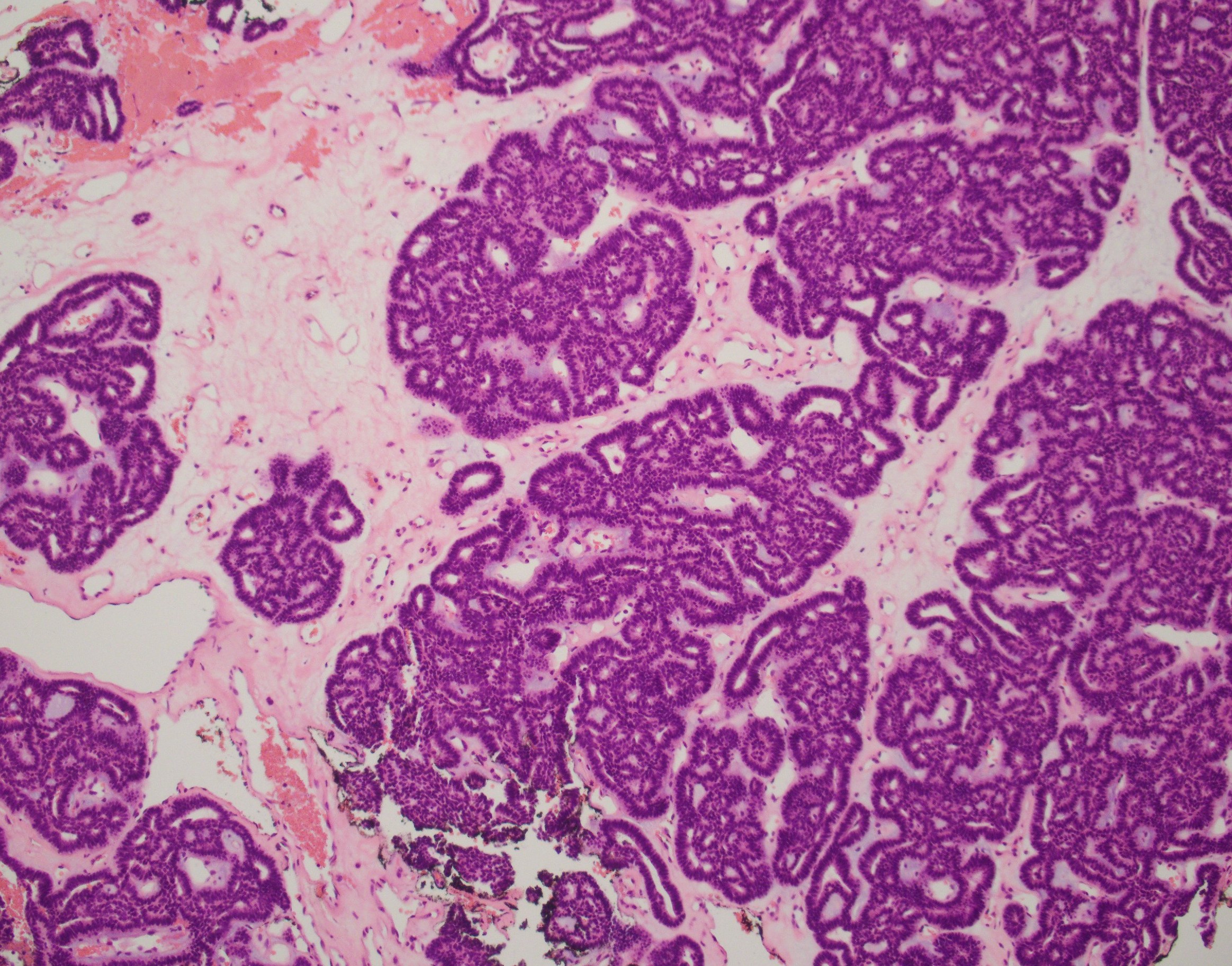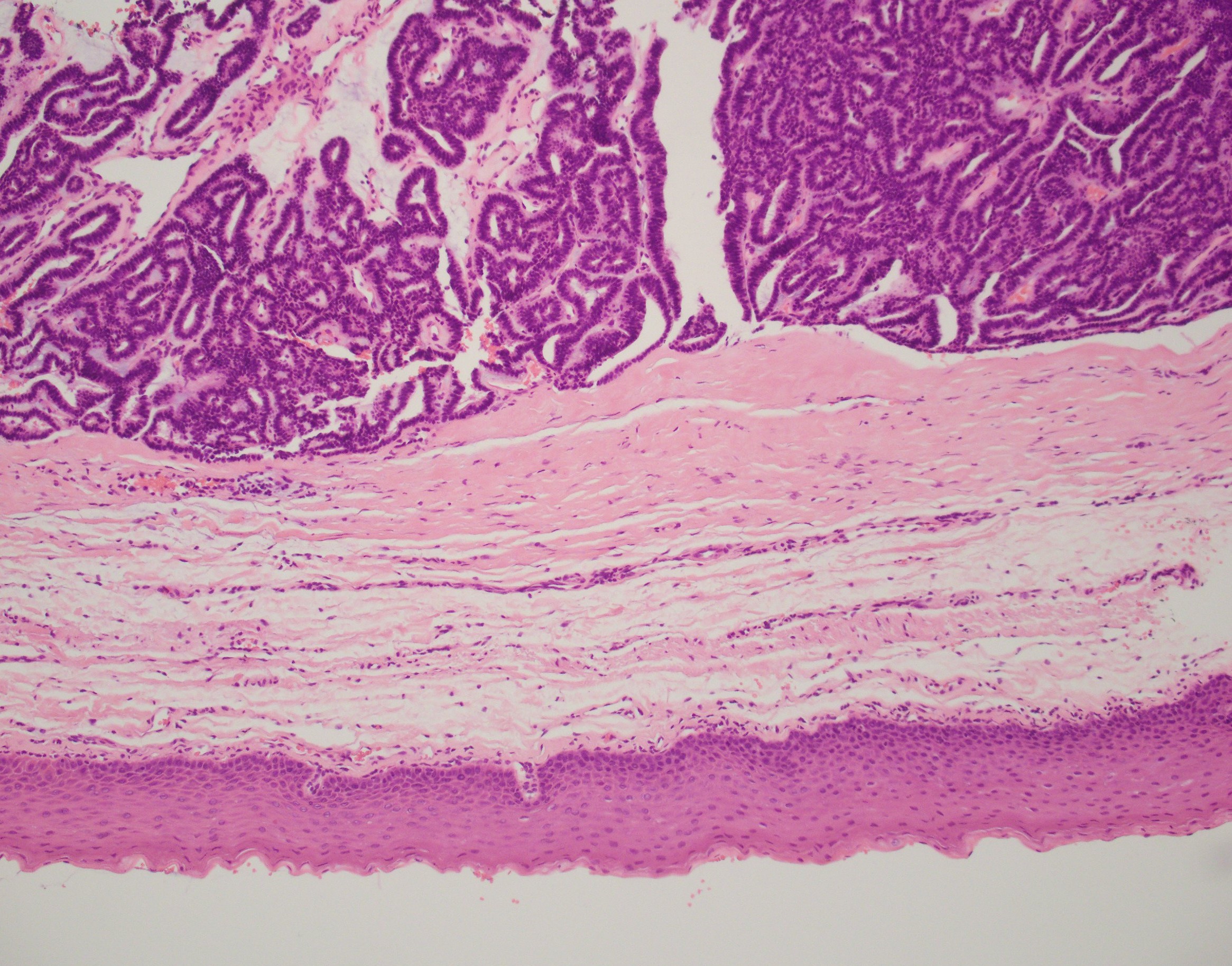Case History
A 71-year-old female presents to an ENT for a soft palate mass. A biopsy is performed.
This neoplasm most often arises in the:
- Parotid gland
- Submandibular gland
- Sublingual gland
- Minor salivary glands
Answer: “D.”
Brief explanation of the answer:
Canalicular adenoma is a well circumscribed neoplasm which can be seen arising in the submucosa demonstrating ribbons of columnar cells with a well vascularized stroma. This histomorphology, in conjunction with the clinical history, leads to the diagnosis of canalicular adenoma. Canalicular adenomas represent approximately 1% of all salivary gland tumors and approximately 4-6% of minor salivary gland tumors. They most commonly arise in the minor salivary glands of the upper lip and palate but can rarely occur in the parotid gland. Treatment typically involves excision and it is uncommon for the lesion to recur. The differential diagnosis includes adenoid cystic carcinoma, adenocarcinoma NOS, and pleomorphic adenoma.
Case contributed by:David Marbury, M.D.,Fellow, Surgical Pathology



